Biofilm Formation Assay Kit
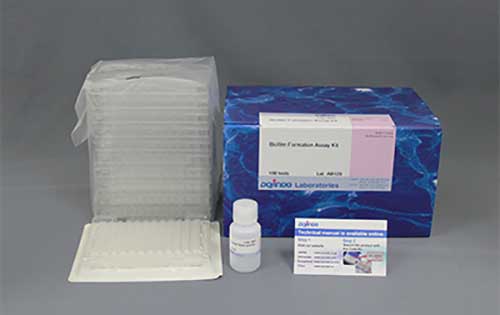
Biofilm Formation Assay Kit
Biofilms are aggregates composed of microorganisms and their metabolites, extracellular polysaccharides, and are present in all environments. The search for drugs and food ingredients that have the ability to form non-smoking biofilms is attracting attention.
By using this kit, it is possible to significantly reduce the time and effort of measurement and suppress the variation in measurement (between facilities, between wells, between measurers).
Product information
Measurement kit of biofilm formation amount / formation inhibition
Our assay kits for the quantitative measurements of biofilm formation/inhibition of biofilm formation (Biofilm Formation Assay Kit) and anti-biofilm drug efficacy (Biofilm Viability Assay Kit) adopted a protocol which is designed to use the peg plate from biofilm formation. Our assay kits combined all the necessary components into each package.
Technical info
Feature 1: Measurement time can be significantly shortened
In existing methods, biofilms are formed on the bottom of the well of a microplate, and additional work is required to change microbial culture media and wash sample several times before and after staining. However, our assay kits allow you to form biofilms on the pegs attached to the plate’s lid. Media change and staining process can be done simply by transferring the lid; therefore, our assay kits are very easy to use.
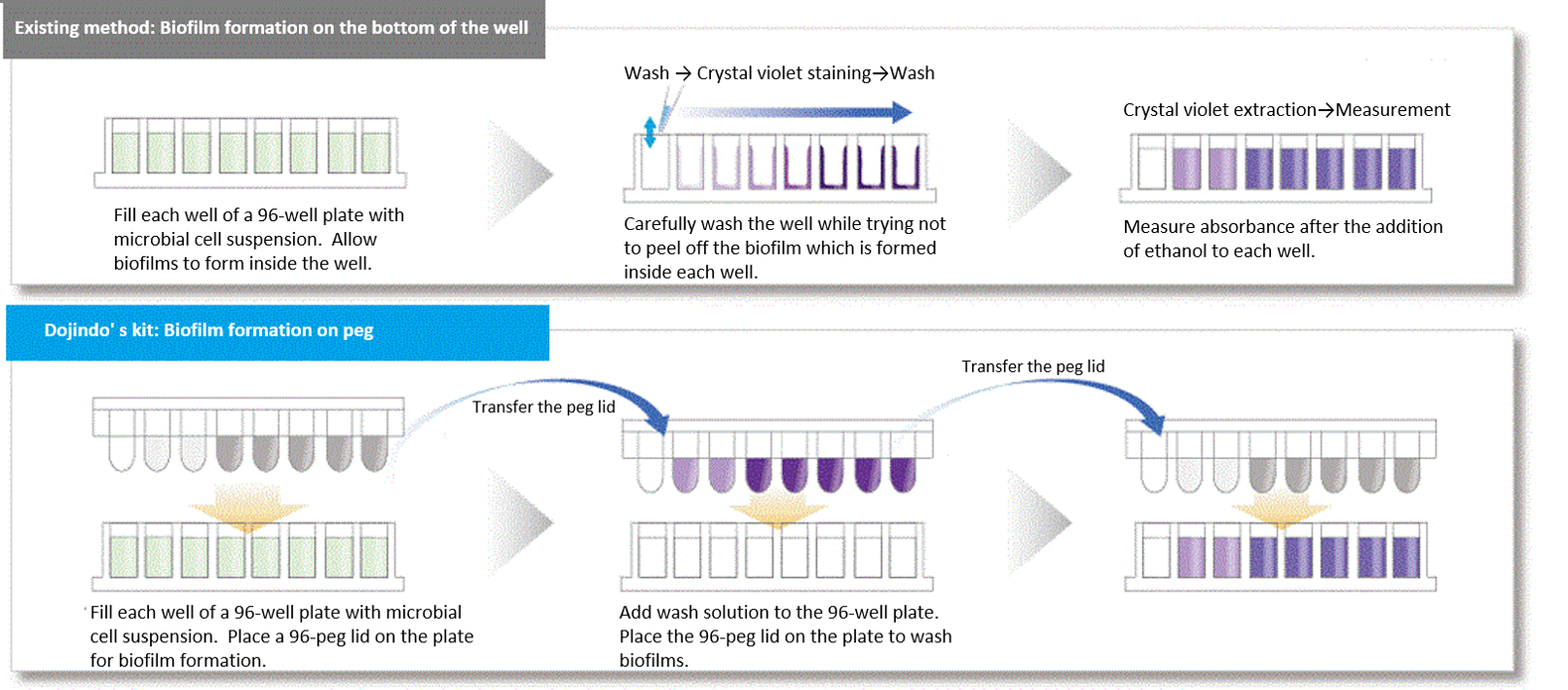
Feature 2: Our assay kits can reduce measurement variation.
In existing methods, biofilm formation occurs on the bottom of the well of a microplate, which made biofilm easier to peel off because of the processes such as washing. This causes measurement variation, and this measurement variation was an issue for the quantification of biofilm. Our assay kits allow you to form biofilms on the pegs attached to the plate’s lid and make it possible to avoid peeling off biofilm which occurs during the process of the formation.

Reference (biofilm formation using 96-peg lid)
T. Tsukatani, F. Sakata, R. Kuroda, "A rapid and simple measurement method for biofilm formation inhibitory activity using 96‑pin microtiter plate lids", World J. Microbiol. Biotechnol., 2020, doi:10.1007/s11274-020-02964-6.
Two different types of assay kits for different purposes.
We offer two types of assay kits that measure the amount of biofilm formation or the metabolic activities of live microorganisms within biofilms by using the same measurement method. You can select the one that best suits your needs.
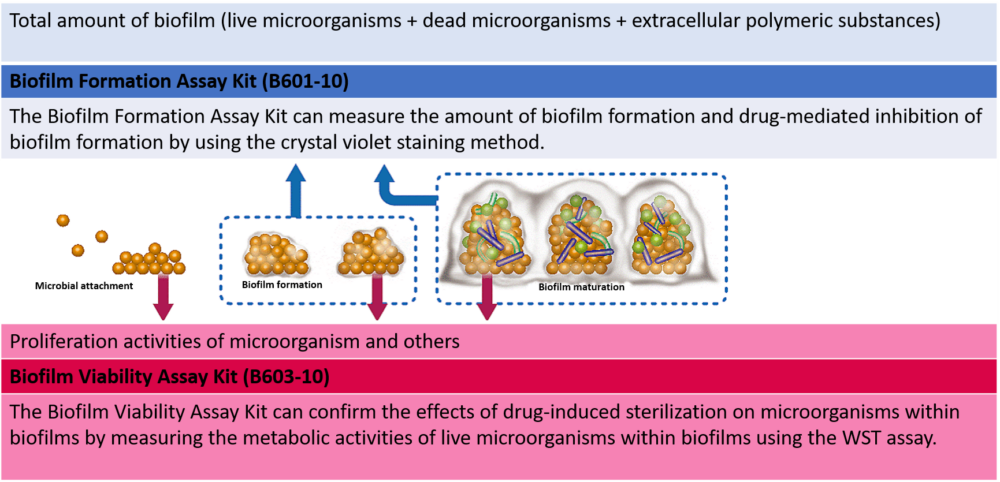
Selection of 2 types of assay kits

*Conditions on biofilm formation vary according to microbial species and strains. When you need to examine these conditions, we first recommend you use the Biofilm Formation Assay Kit.
*The Biofilm Formation Assay Kit is a product developed together with Fukuoka Industrial Technology Center.
Procedure
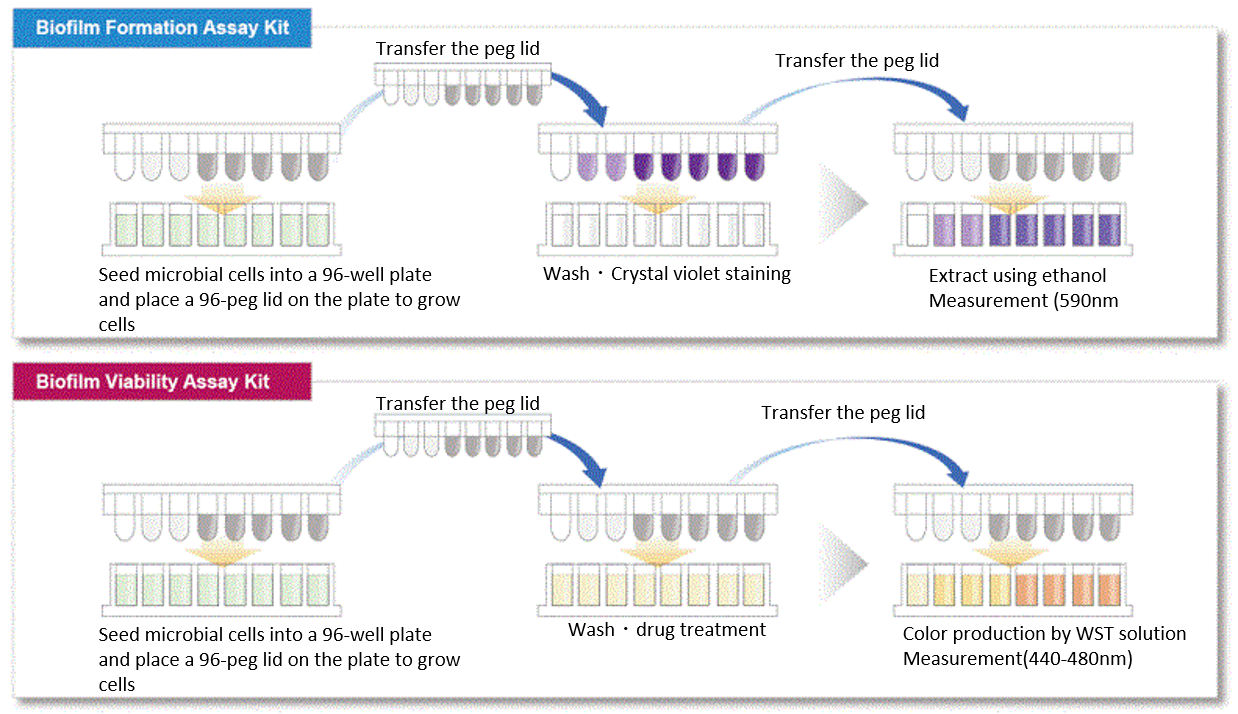
Example of measurement
Indicators for drug-mediated inhibition of biofilm formation or antimicrobial effect of biofilms include MBIC (minimum biofilm inhibitory concentrations) and MBEC (minimum biofilm eradication concentrations). MBIC and MBEC of S. aureus were measured using each kit.
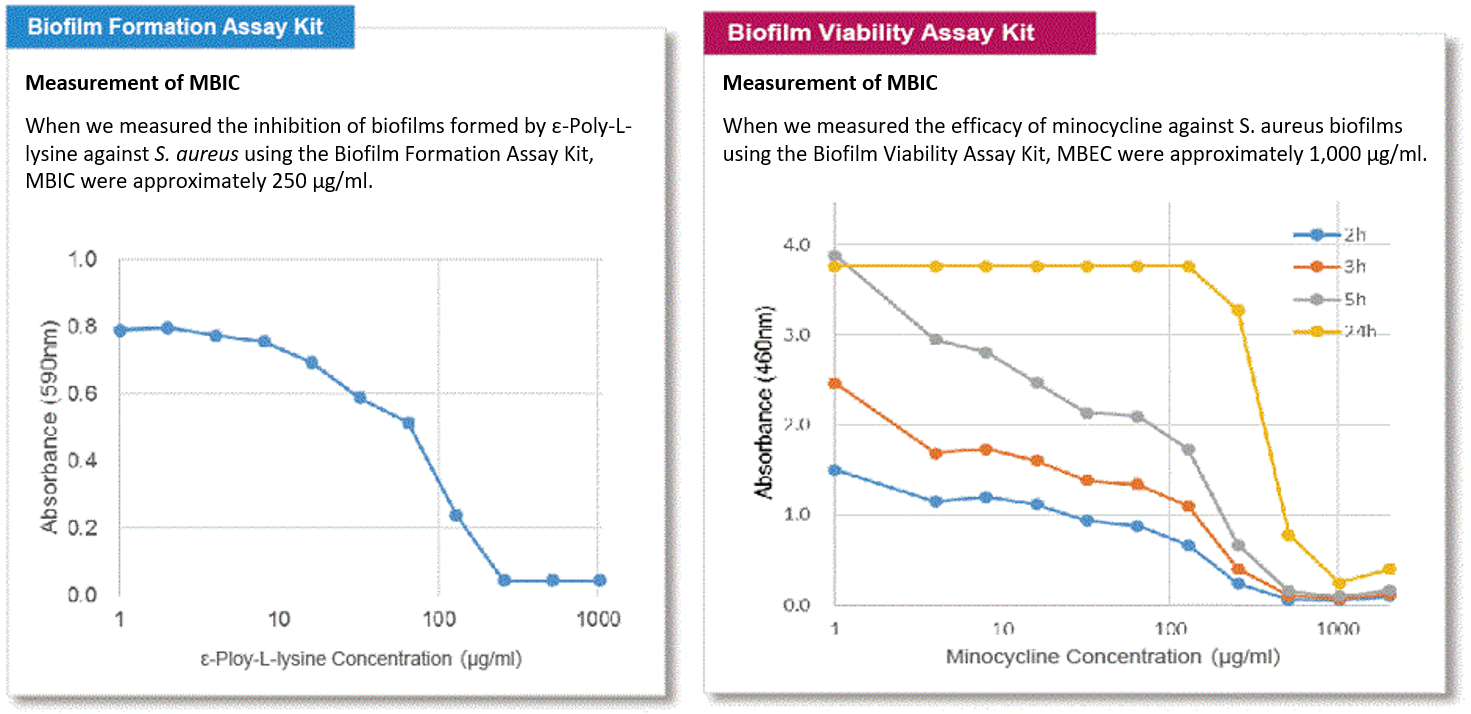
References
I. Okamoto, H. Miyaji, S. Miyata, K. Shitomi, T. Sugaya, N. Ushijima, T. Akasaka, S. Enya, S. Saita and H. Kawasaki, "Antibacterial and Antibiofilm Photodynamic Activities of Lysozyme-Au Nanoclusters/Rose Bengal Conjugates", ACS Omega, 2021, doi:10.1021/acsomega.1c00838.
2)A. baumannii(MDRAB)
Y. Sato, T. Ubagai, S. T.-Nagakawa, Y. Yoshino, Y. Ono, "Effects of colistin and tigecycline on multidrug-resistant Acinetobacter baumannii biofilms: advantages and disadvantages of their combination", Sci. Rep.., 2021, 11, 11700. doi:10.1038/s41598-021-90732-3.